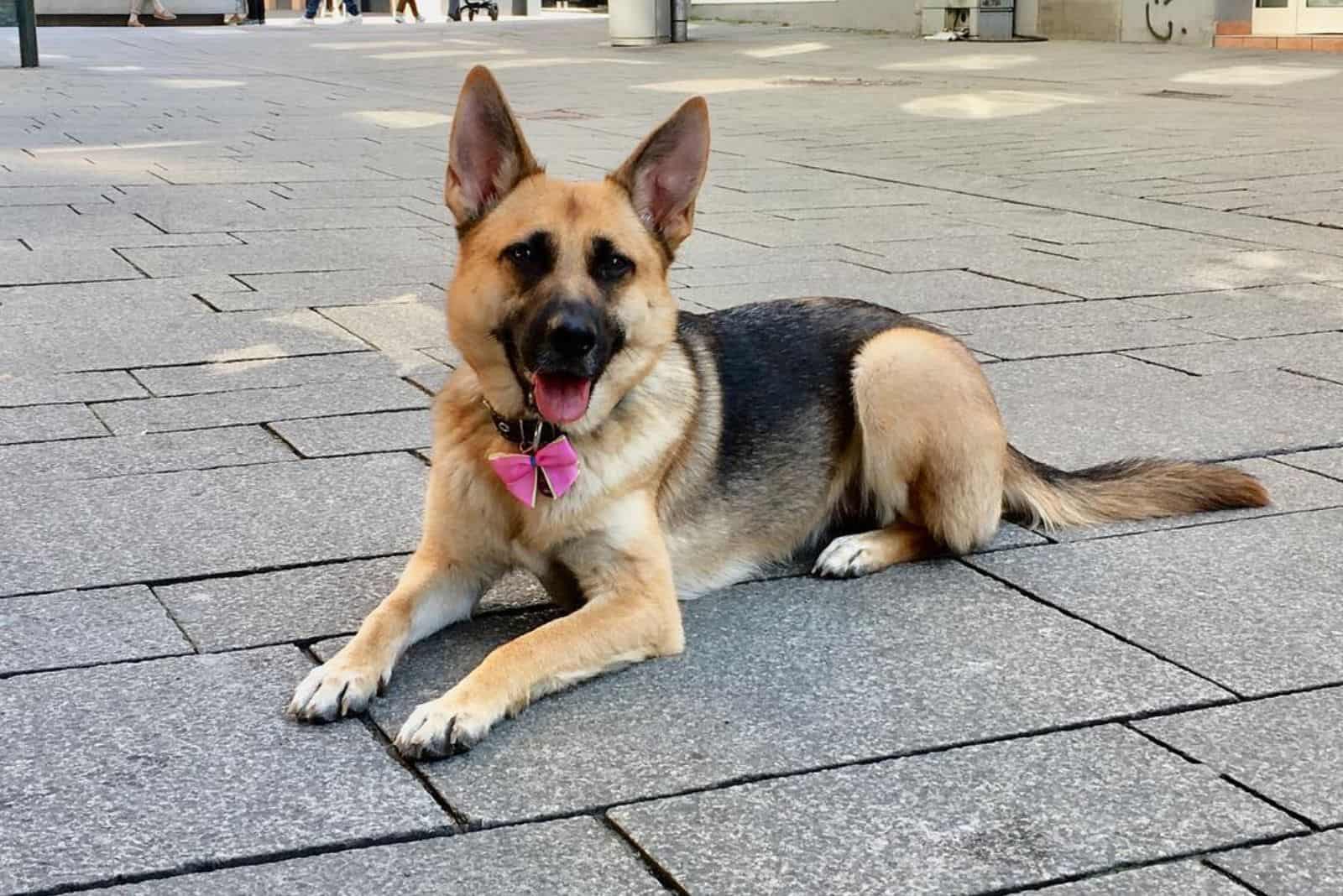Everybody who sees my dog asks me why is my German shepherd so small. I simply cannot cope with that anymore, so I decided to do some research on Google. If that is you prior to bumping into this article, then you are three steps closer to the answer.
While others’ opinions are not that important when it comes to your pet, knowing what happened during your dog’s development period that kept its size small can be comfort food for the mind.
Plenty of possibilities exist that can fully explain the bewitching “Why is my German shepherd so small?” uncertainty and explain we shall. Some involve human nature, others medical conditions, but what matters most is putting a finger on something so far unknown.
Small German Shepherd Causes At A Glance
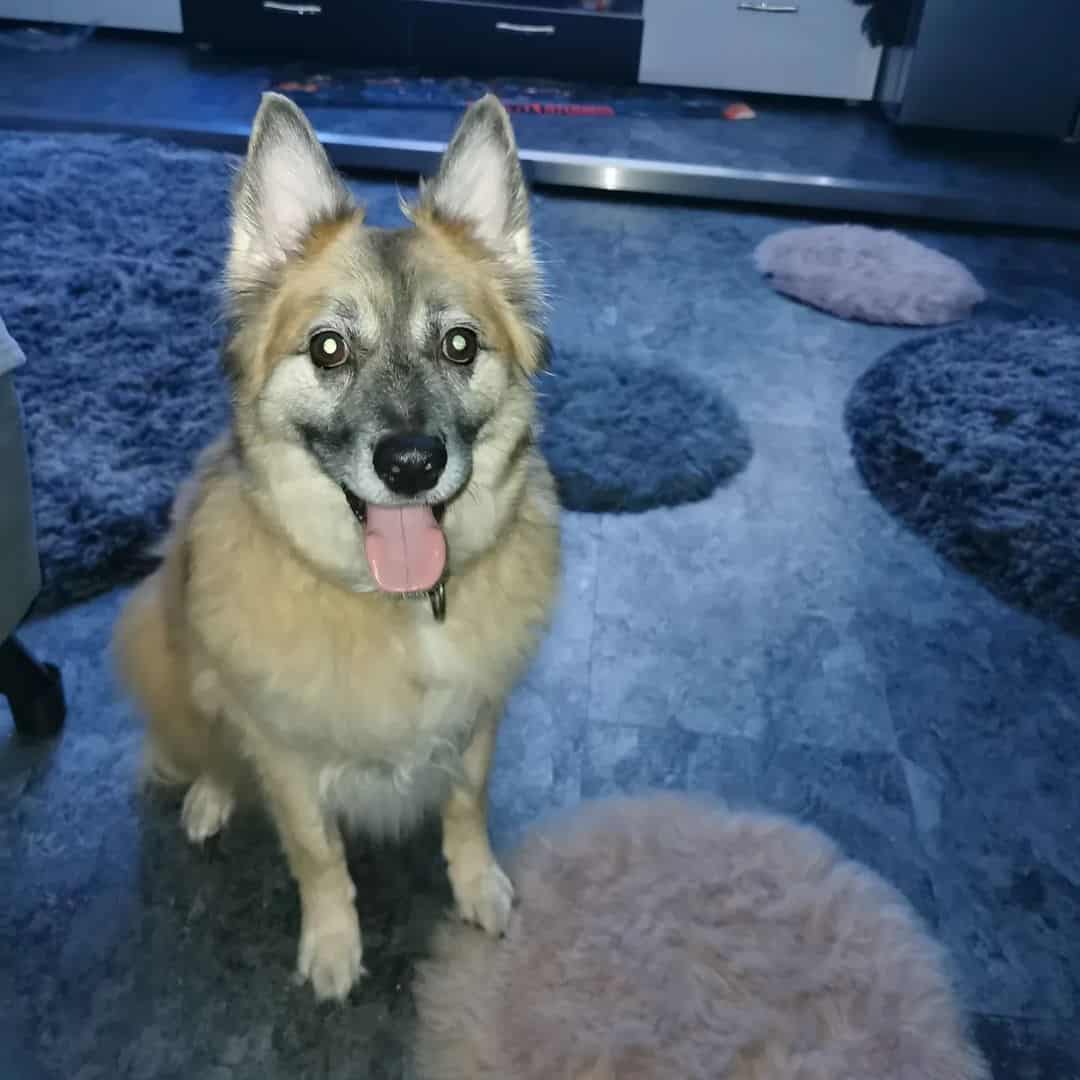
The first and most common reason your German shepherd might be smaller than a purebred GSD is supposed to be is as simple as you have a mixed breed that inherited all traits from the German shepherd parent. The “miniature GSD” is an example of such a mix.
If you got a pup from a show line of German shepherds, then you will have a slightly differently built dog than a working dog bloodline. The latter has an overall more substantial build than the former.
Large breeds, such as the German shepherd, are known to have a slower rate of growth. Reaching the healthy weight and height of a grown GSD has to happen slowly and in a controlled manner. Your pup might simply be waiting for that growth spurt to stop being little.
Naturally, if it is a dog older than two years, its growth period is done, and you are probably looking at some of the other causes as explanations as to why it remained smaller in size.
Still in the realm of genetics but out of the intentional breeding scope, dwarfism can prevent your GSD from growing past a certain point. Although it is an extremely rare occurrence, it is a possibility.
Breeding And Medical Reasons
Selective breeding to get a smaller dog is very popular around the world. However, it is not a common practice with German shepherds. You will not find a purebred miniature GSD anywhere, and if you do, it is probably a scam.
It is possible that your dog is not as big as the German shepherd dog breed standards call for. That can happen either because its parents were smaller in stature or due to medical reasons.
German shepherd puppies can be infected by intestinal worms, which eat up all the nutrients required for the normal development of the body during the growth period. Human error often results in stunted growth in puppies due to an improper diet or feeding the dog too little.
Before we get into each of these reasons in more detail, we have to establish some ground rules as to what a healthy weight and height should be.
The German Shepherd Dog Breed Standards
According to the American Kennel Club (AKC) and other kennel clubs and organizations, an adult male GSD should be between twenty-four and twenty-six inches in height and weigh from sixty-five to ninety pounds.
Female German shepherds have less muscle and are slightly shorter, with a height of twenty-two to twenty-four inches and weight between fifty and seventy pounds.
It is a noticeable difference in size between sexes, but anything lower than that on a female, and especially a male, is not considered healthy for the breed.
Note that, in this article, we are talking about German shepherd size, which implies that the dog is not skinny or fat but simply does not have the desired (healthy) proportions a GSD should have.
1. Your German Shepherd Is A Mixed Breed
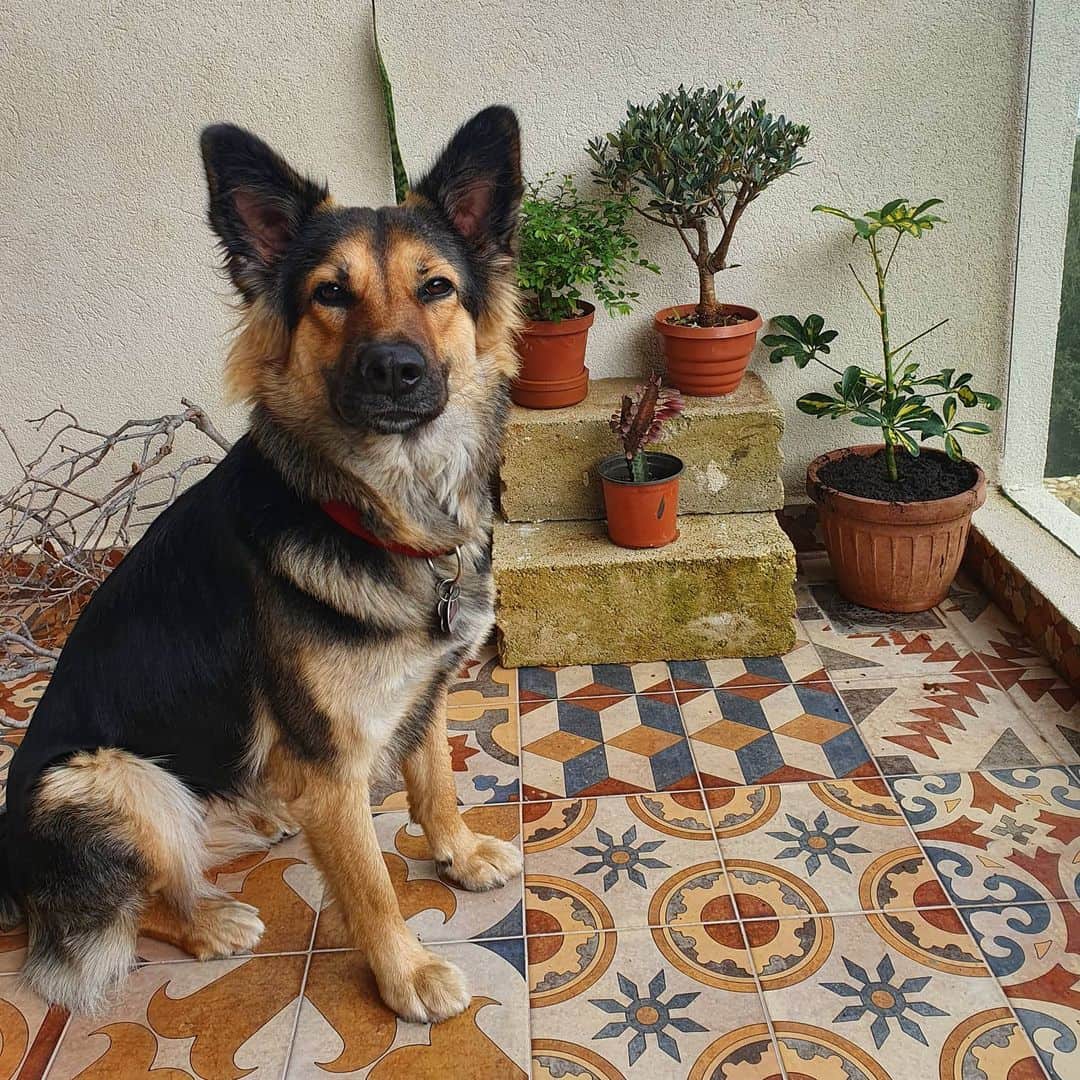
It would not be the first time that a breeder tricked someone into thinking they got a purebred German shepherd dog. With hybrid dogs that look like GSDs, fifty percent of the traits are taken from the GSD parent, and the other fifty are from another breed.
However, without any standards or regulations for this type of uncontrolled breeding practice, there is no way to predict the exact traits of the litter.
So, you might have bought a GSD-looking puppy that took the physical features of the German shepherd but other traits from the second parent. A popular mix is of a Belgian Malinois and the German shepherd, which can produce puppies smaller than purebred GSD ones.
Breeders nowadays cross many dog breeds of different sizes with German shepherds, so if you want to compare your small GSD to some of those mixes, read our article describing twenty-three German shepherd mixes.
An easy way to find out your dog’s heritage five generations back, along with many other traits, is by doing a DNA test. Embarkvet is among the most popular companies in the canine genetics world, so do not be afraid to have some fun by sending a sample of your dog’s hair.
2. Your GSD Is A Show Line Dog
It is widely known that German shepherd dogs were bred for their work drive and strength. For many decades, their bloodlines were the staple of GSD breeding all over the world.
At one point in time, breeders decided to shift the focus to the show line German shepherds, which were lighter, calmer and had a less pronounced prey drive. Most of the GSDs you see around are probably show dogs.
The difference is mainly in the length of the legs, body frame, and muscle mass. The working dog has a square build with a flat back, while the show line has more of a gracious appearance due to the slanted lower back and shorter hind legs.
Even the bones of the working dog bloodline are thicker. With these physical differences, the working line of German shepherd dogs is used as service dogs within the army and law enforcement, while many of them are “simple” old sheepdogs.
Show line GSDs have milder temperaments and are less aggressive in their approach to potential threats. The intense dog training of the working line of German shepherds is so deeply instilled it has now become a genetic trait within the bloodlines.
Have an interest in training your GSD? If you are not the biggest fan of your dog’s incessant barking, read this article on getting the barks under control. With the right training, anything is possible with a German shepherd.
Most of the high-quality working-line GSDs are called “Old German shepherds” and come from Europe, while American German shepherds have a name that is interchangeable with show-line GSDs.
Why is my German shepherd so small? Well, maybe you are comparing it to dogs that do not have the same purpose and do not come from the same bloodline.
3. Just A Blip In The Growth Period
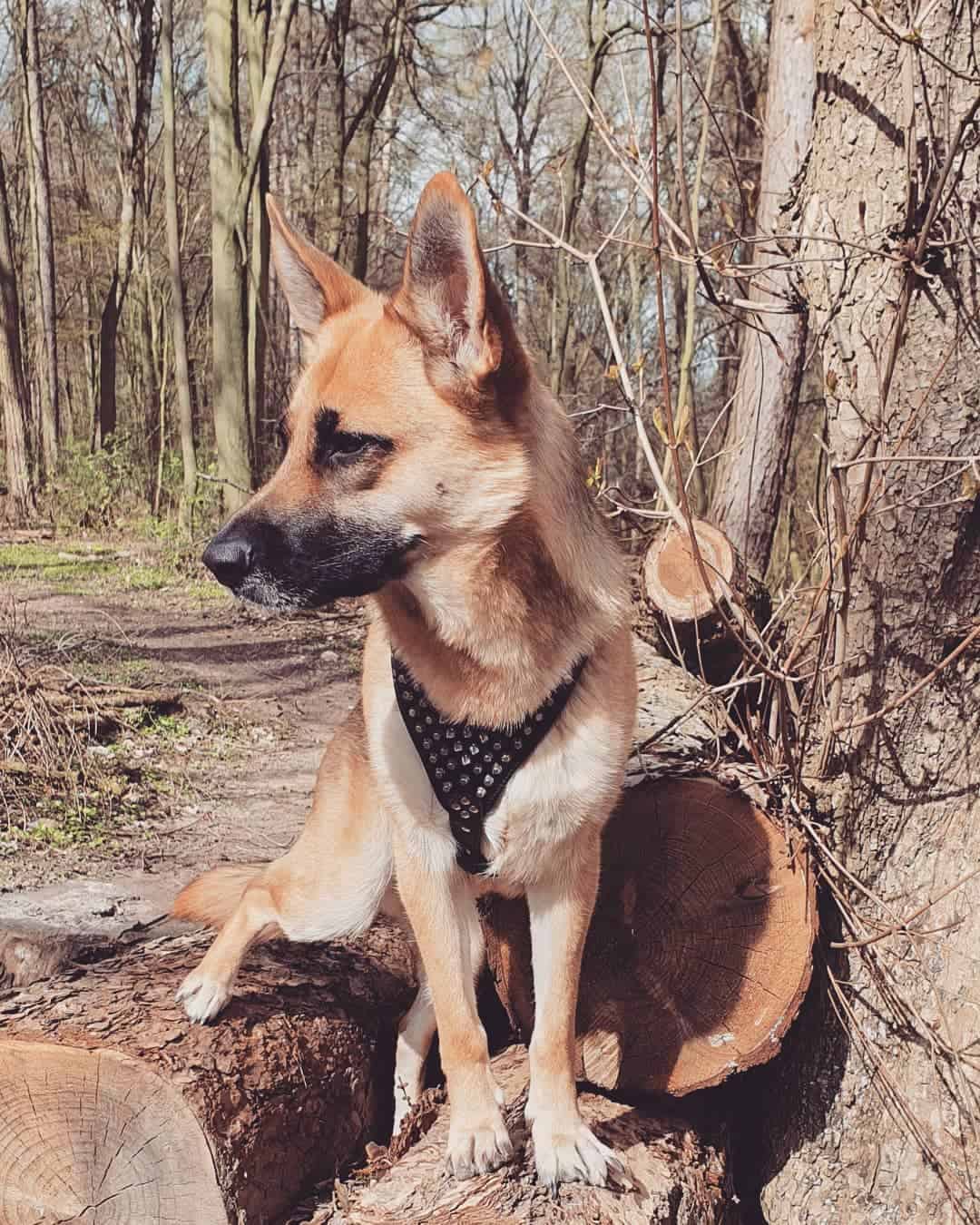
Most German Shepherd owners, as well as other large-breed dog owners, will tell you that there are pauses in the growth and development period of a GSD puppy.
Growing to the size of twenty-six inches and a weight of ninety pounds is a lot of work that must be done in a controlled manner. For this reason, you will see that any large-breed puppy will have a growth spurt that lasts a couple of weeks and then stop for the same amount of time.
There is a consensus about five distinct growth phases in a German shepherd puppy’s life. The first is from birth to three weeks of age, while the second one is from three to thirteen.
The third phase lasts from three to six months of age and goes into the adolescent phase, which happens in months six through sixteen. The last phase encompasses the time from sixteen months of age to three years.
By far, the phase where you will see the biggest growth is the first three phases. After six months, the growth rate will slow down, but your German shepherd might physically mature before the usual two-and-a-half-year mark.
For a more in-depth look at phases and what behavior and physical changes a GSD puppy goes through, have a look at our German shepherd growth chart.
Essentially, if your puppy is still developing and a period comes when growth is slowed down while other German shepherd puppies are already bigger, your pup might just be a late bloomer.
4. Dwarfism Or Achondroplasia
While this is by no means a common occurrence among purebred German shepherd dogs, some genetic predisposition to achondroplasia is present within the breed. Dogs with dwarfism should not be bred, as it is unethical to purposefully pass on genetic mutations.
Achondroplasia is a variant of osteochondrodysplasia, a genetic condition that is characterized by abnormal development of the bones and cartilage.
The protein called fibroblast growth factor on the FGF9 gene has the crucial function of making sure that the dog embryo develops properly and that all cell functions (migration, proliferation, and differentiation) are possible.
A mutation on this gene can inhibit its effect on a German shepherd puppy’s bone and cartilage development, resulting in achondroplasia or dwarfism. This condition means that your dog’s limbs will be shorter than normal.
Still, other clinical signs exist, and the shorter limbs and disproportionate body compared to healthy GSDs are only one part of it. A head that is larger than it should be, irregular bone shape, overall stunted growth, shorter nose, underbite, etc., are all symptoms of achondroplasia.
If you notice any of these symptoms in your German shepherd, there is nothing you can do about it other than consult the veterinarian about how to make life easier for it. The condition is congenital, which means it is inherited from the parents.
Dogs with dwarfism usually have a shorter lifespan, so a healthy lifestyle and proper secondary care are even more important if your dog has achondroplasia.
For this reason, you should always choose the breeder carefully. Do not go bargain hunting for a purebred, healthy German shepherd, or you might end up asking the question, “Why is my German shepherd so small?”. After all, you do get what you pay for.
5. Selective Breeding
On the same topic of breeders and breeding practices, it is important to be aware of selective breeding. Although it is self-explanatory, it consists of handpicking smaller adult dogs from litters and mating them with other smaller representatives of the breed.
By doing so, breeders manage to produce a purebred German shepherd that is smaller than the breed standard requires them to be. Although there is nothing wrong with that, a smaller-than-normal dog usually has some genetic defects.
Continuing to breed these defects will only increase the chance of more abnormalities, which in the long run, means an unhealthy bloodline. When talking to a breeder about purchasing a GSD puppy, make sure you ask for parent DNA tests clearing them of genetic issues.
It is beneficial to know the pedigree of the dog or, if possible, its lineage dating as far back as the records go. Most reputable breeders will already have these papers, but it never hurts to ask in case they forget.
Keep in mind that minor differences in height, such as an inch lower than the breed standard, do not mean the dog is unhealthy but simply has smaller parents. Perhaps it is from the working line of dogs where being of an exact height or weight is less important than the ability to work.
6. Improper Diet And Not Enough Calories
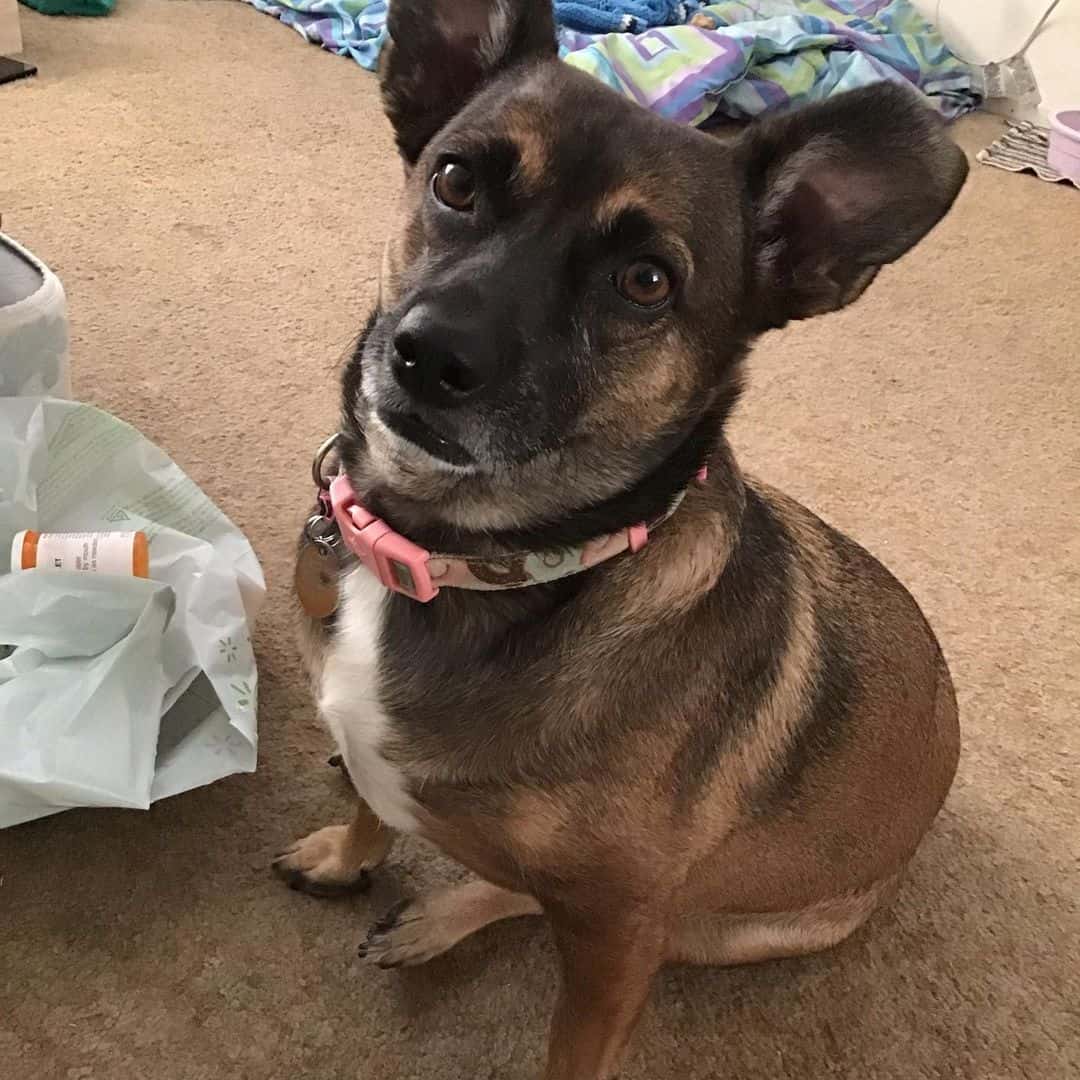
Both of these arguments answer your question, “Why is my German shepherd so small?” and fall under the category of human error. First-time owners should inform themselves about the breed’s dietary requirements and physical activity levels.
Failing to satisfy both can lead to a malnourished puppy that will not grow to its full potential. A dog’s weight is the first indication that it is not eating enough calories or that the distribution of meals throughout the day is not balanced.
Puppies have to receive proper nutrition with plenty of protein, fat, and calcium content. The speed at which their bones grow in the first few growth phases is so fast that the slightest disbalance of nutrients can create problems.
Use this German shepherd feeding chart as a guideline for dosage, frequency, and nutrient balance.
One of the most common errors GSD owners make is forgetting how important minerals and vitamins are in a diet. The two parathyroid glands control the levels of calcium in the body, and a low level of it in the pup’s blood can cause stunted growth.
Calcium supplements and other minerals like phosphorus, iron, and vitamins like vitamin D and A are crucial for proper bone growth and a healthy metabolism. However, the best diets for most GSD owners are high-quality commercial foods.
For convenience, here is a list of the fifteen best dog foods for German shepherds that we know are high-quality and will make your life that much easier.
You can choose plans that include wet food, only dry food, go homecooked, or even try to figure out whether a raw diet is good for your German shepherd.
Is Your German Shepherd Eating Enough?
A complete diet is worthless if the daily caloric requirements are not met. A large dog breed such as the GSD is going to consume a lot of energy during physical activity, so the food needs to match it.
The German shepherd’s adult weight is between sixty-five and ninety pounds (50-70 for females), which means it should eat around three and a half to four cups of food twice per day.
If your dog is more than moderately active, it is prudent to feed the dog more food. Increasing the portion by half a cup or a cup will usually be enough. For even more calories, introducing treats such as sweet potatoes will fill up the tank.
Remember to not exceed giving out treats. As a rule of thumb, the calories fed through treats should not be more than ten percent of the daily caloric intake. Mixing wet food with dry food or introducing some home-cooked chicken and rice is another option your GSD will love.
It will also help your dog with weight gain in case it is too skinny. Note that giving one giant meal to your adult, and especially a puppy, is not healthy. Pups should eat four meals per day, and adults two or three.
Bloat is a common occurrence in German shepherds and other large breeds if too much food is ingested too fast. Consider giving a read to other causes of a swollen stomach without pain in dogs.
7. Health Issues
You might think these are rare, but the number one cause of stunted growth in German shepherd puppies is intestinal worms. Whether hookworms or roundworms, their purpose is singular — take all the nutrients from the puppy’s small intestine and use them to multiply.
This condition is not serious by any means but can cause your puppy to stop growing if not treated in time. Antiparasitics like dewormer are given to puppies before they are given to their owners. At least, that is what good breeders do.
Your puppy’s developmental period will require a constant influx of vitamins and minerals in addition to the main nutrients like protein and fat. Intestinal worms will do serious damage, like impeding growth, only if the condition is left untreated for a long period of time.
Additionally, the conditions in which the puppy lives have to be incredibly bad for stunted growth to occur, so to truthfully answer “Why is my German shepherd so small,” I have to say it is highly unlikely due to intestinal worms unless you adopted an adult rescue that lived in poor conditions.
Misconceptions About Why Is My German Shepherd So Small
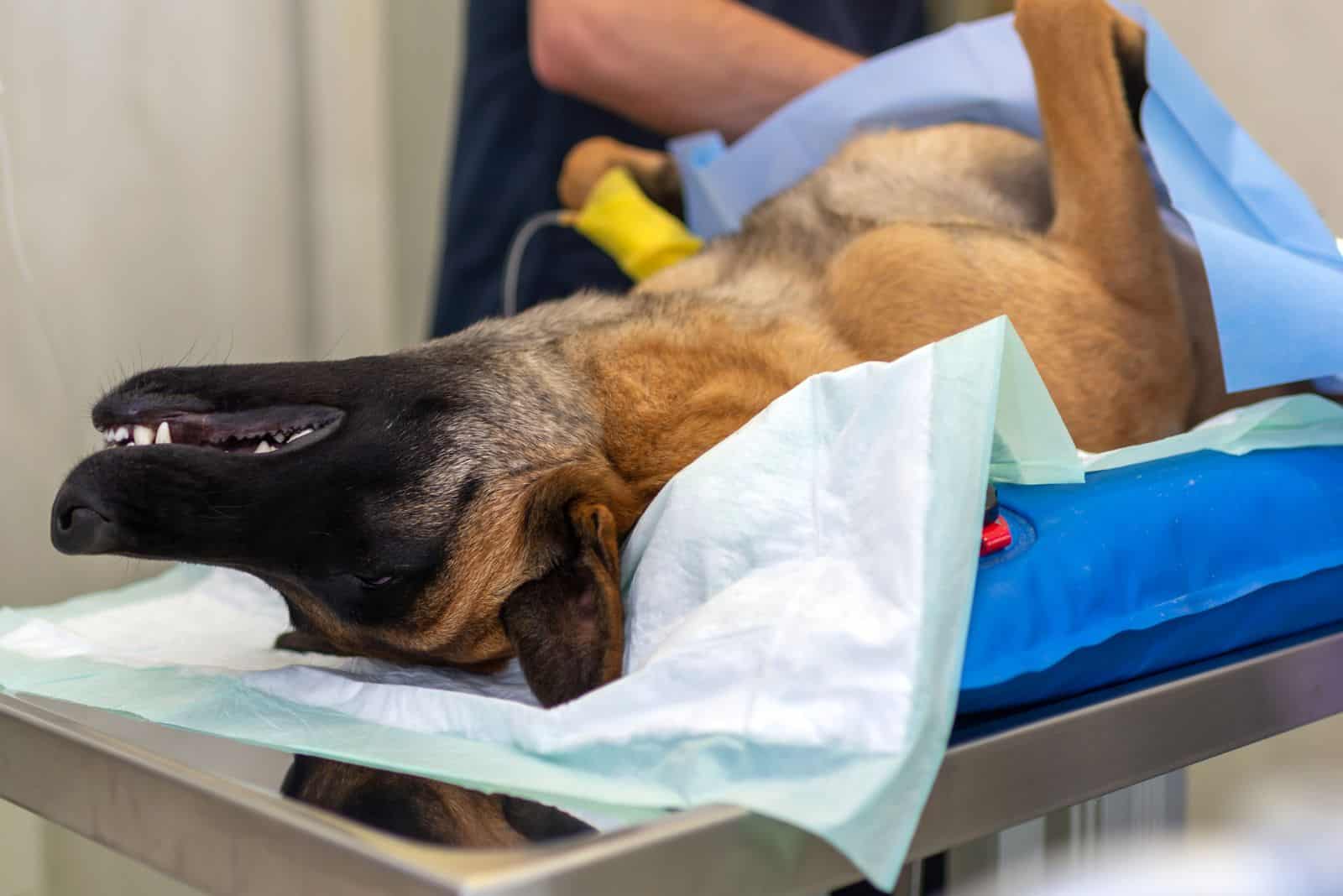
You might have heard that spaying or neutering causes your German shepherd to stay small if done sooner than recommended. I can tell you that it has nothing to do with stunted growth but does carry a risk of health problems developing.
The National Library of Medicine National Center for Biotechnology Information department conducted a study that confirmed the correlation between spaying or neutering and joint disorders.
Most affected were growth plates in non-mature dogs. A growth plate is a place on a bone where new bone tissue is supposed to grow.
For this reason, it is a good practice for large breed dogs to spay or neuter them only after fully maturing (two years for males and after the first heat cycle for females). That settles the “Why is my German shepherd so small?” dilemma in terms of spaying or neutering too early.
Intense Physical Activity Can Stung Growth
A puppy’s small body is still not developed properly, and many areas that will be bony and solid are still somewhat soft. There is an unfounded belief that too much running, jumping, and exercise, in general, can make your puppy stop growing, but that is not true.
Similar to spaying or neutering before full maturity, excessive pressure on the joints and bones can cause conditions like hip dysplasia. However, chances are your puppy will get tired long before reaching the point of overexercising.
Without fully developed skin and musculature, a non-mature dog can have long-term issues with joints and paw pads or develop muscle fatigue due to excessive physical activity. Make sure you take regular breaks between play sessions but rest assured, stunted growth is not a consequence.
Conclusion
We have seen that stunted growth is very rare but still a possibility. If you are asking yourself why is my German shepherd so small, you have to put it into context. What is it small compared to?
A vet checkup can clear all the worry from your mind. If nothing is wrong with your German shepherd puppy, then it is probably a case of you getting tricked that a mixed breed of GSD and some smaller dog breed was “advertised” as a purebred German shepherd.
The other explanations for a small stature compared to breed standards are not common. Do make sure to buy from reputable breeders to avoid genetic mutations like dwarfism or intestinal worm infestations that can impair a pup’s development.
Finally, research how much and how often to feed an adult and GSD puppy before getting one. Every dog will have slightly different caloric needs, but the feeding and growth chart I provided in the article should work as a general guideline.
That is about it. Small or not, a healthy German shepherd is a delightful canine that will give you many years of companionship and love, so take care of it to prevent further shrinkage.
